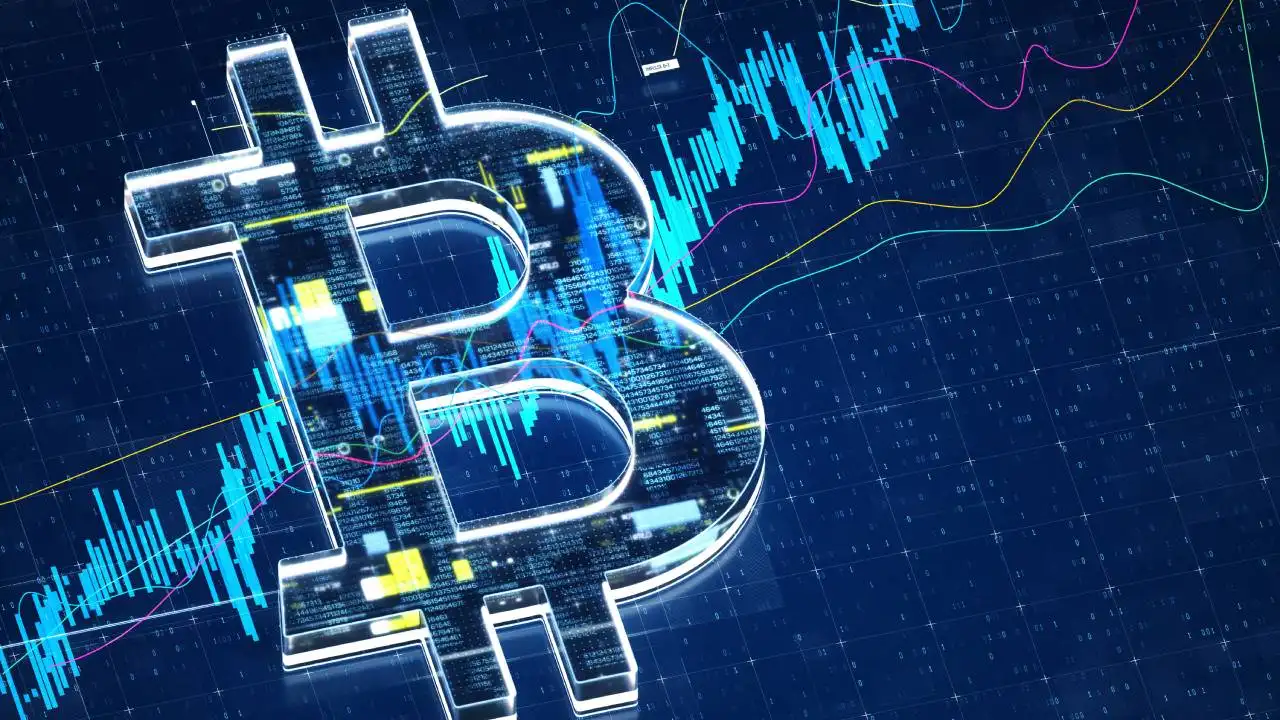VanEck says look for these two warning signs on Bitcoin’s path to $180,000
Wall Street asset manager VanEck believes Bitcoin will hit $180,000 next year — and go much higher if Trump makes good on a campaign promise.
If history repeats itself, Bitcoin will continue its stunning post-election climb and hit $180,000 next year, according to Wall Street asset manager VanEck.
But company analysts could be wrong. If they are, two data points will be flashing red: Bitcoin funding rates and traders’ “relative unrealised profit,” the company’s chief crypto analyst said Tuesday.
“We continue to put significant weight in the four year cycle for Bitcoin,” Matthew Sigel, VanEck’s head of digital assets research, said on a webinar.
He said the firm monitors several topping indicators that would “signal that maybe that $180,000 peak is wrong.”
Red flags
The amount of newly issued Bitcoin is automatically cut in half every four years.
Bitcoin has surged the year after each “halving,” which means its recent gains could be the beginning of a dizzying climb. Bitcoin’s latest halving was in April.
Back-of-the-envelope maths suggests a peak just shy of $200,000, according to Sigel: Bitcoin saw a 2,000% gain during its last four-year cycle, but each cycle’s gains have been progressively smaller.
If Bitcoin grew a mere 1,000% from its recent low of $18,000, it could hit $180,000 sometime next year.
But a perpetuals funding rate that stays above 10% for more than two months “generally demonstrates that there is speculative excess in the market,” Sigel said.
“Just recently, the perps funding rate has exceeded 10%, but it’s only been a couple weeks.”
A high funding rate often indicates heightened demand for long positions in the market. A negative funding rate indicates heightened demand for short positions.
The proportion of Bitcoin’s total value represented by traders’ unrealised gains, called relative unrealised profit, suggests traders are primed to sell.
“This is another one that we watch very carefully, because of the nature of the Bitcoin Blockchain,” Sigel said. “Anyone can see the average price that holders have purchased at.”
Relative unrealised profit of 0.7 or higher is a sign the market is about to drop, he continued.
“We’ve only just reached the 0.6 level. Typically, the forward returns are still quite good,” Sigel said. “It’s when we hit that 0.7 level that we’re probably going to be closer to making a top call.”
Stockpile surge
Sigel also said he expects it to hit $3 million per token by 2050. But it could go far, far higher if President-elect Donald Trump follows through with a promise to establish a national “strategic reserve” of Bitcoin, the VanEck analyst said.
If the US acquires 1 million Bitcoin over the four years of Trump’s second term, and if Bitcoin’s price appreciates at a mean annual rate of 25% through 2050, each Bitcoin could be worth $42 million.
Sigel acknowledged that that growth rate is unlikely: while modest for the 15-year-old cryptocurrency, it would be astonishing for any other financial asset over such a long time period.
“Nationstate adoption is critical to taking Bitcoin to the multimillion-dollar valuation,” he said.
Bitcoin-curious countries are indeed on the rise: Russian lawmakers have floated acquiring Bitcoin to free the country from the stranglehold of the US dollar. And the governments of Ethiopia, Argentina, and Kenya have announced plans to mine Bitcoin.
Even state lawmakers in the US have suggested their states begin accumulating Bitcoin.
But Sigel isn’t convinced there will be enough enthusiasm in Congress to pass a law directing the federal government to start buying tranches of Bitcoin.
Indeed, of the 31 bills that Wyoming Senator Cynthia Lummis has filed this Congress, only two have yet to attract a single co-sponsor. One would create the much-discussed Bitcoin stockpile.
Trump could, however, create a less impressive stockpile without Congress’ help, according to Sigel.
One option would be to direct the Treasury to use something known as the Exchange Stabilization Fund to buy Bitcoin. The fund is a pool of money that can be used to stabilise the value of the dollar.
“If the president and the secretary can make a logical case that acquiring Bitcoin will reinforce the value of the dollar by making us competitive in AI, energy production and digitally native money, then the Treasury may have discretion to use this ESF in order to buy bitcoin directly,” Sigel said.
It wouldn’t be the first time it’s been used creatively.
“In the 1970s the Secretary of State used it to acquire, like, oriental carpets from some Middle East country, just as a way of establishing goodwill,” Sigel said.
Aleks Gilbert is DL News’ New York-based DeFi correspondent. You can contact him at [email protected].
Disclaimer: The content of this article solely reflects the author's opinion and does not represent the platform in any capacity. This article is not intended to serve as a reference for making investment decisions.
You may also like
BlackRock’s Bitcoin ETF Surges in First Year as Institutional Demand Heats Up

Hedera And SUI Investors Join Other Early Adopters On The FX Guys ($FXG) Presale Ahead Of A 20x Price Move

Cardano (ADA) Price Rebounds to $1, But Can It Last?

$250 Million Liquidated: Bitcoin and XRP Lead Bear Massacre

